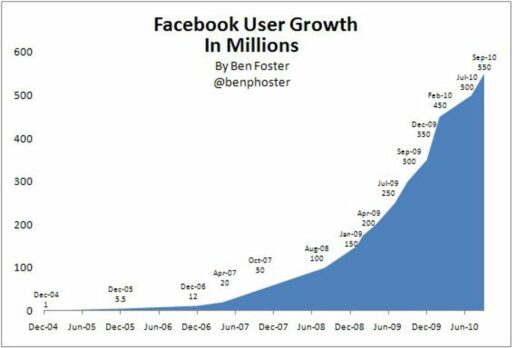Table of Contents
The concept of a Data Lake has revolutionized the way organizations manage and analyze vast amounts of data. With the advent of the zero-copy data lake, businesses are discovering new efficiencies in data handling and analytics. This article delves into the intricacies of zero-copy data lakes and their symbiotic relationship with data lakehouses, exploring how they collectively enhance data accessibility, management, and quality, while also providing a cost-effective solution for businesses of all sizes. We’ll examine the transformative impact these technologies have on sectors like healthcare, where data-driven innovation is paramount.
Key Takeaways
- Zero-copy data lakes represent a new paradigm, centralizing data storage and simplifying data consumption, which enhances feature delivery and analytics.
- Data lakehouses, blending the features of data lakes and warehouses, provide structured and flexible data management, catering to various stages of data quality.
- The synergy between zero-copy data lakes and data lakehouses offers significant cost savings, improved data quality, and empowers analysts with self-service tools.
- Data Warehouses remain crucial for business analytics, offering secure and scalable solutions for integrating historical data and gaining comprehensive insights.
- In healthcare, zero-copy data lakes and lakehouses enable rapid innovation and agility, essential for achieving excellence in patient care and operational efficiency.
Exploring the Zero-Copy Data Lake


The New Data Paradigm
The advent of the zero-copy data lake represents a transformative approach to managing vast amounts of data. Unlike traditional systems that often require complex and time-consuming processes to copy and transform data, the zero-copy data lake enables direct and immediate access to raw data. This shift is not just about storing more data; it’s about unlocking the potential for faster feature delivery and more dynamic data interaction.
The zero-copy data lake harmonizes the need for both structure and flexibility, providing a foundation for real-time analytics and insights. It stands as a central hub, allowing analysts to engage with data without the delays associated with traditional data management systems.
The implications for industries such as healthcare are profound. With an ever-increasing volume of data generated, a scalable and sustainable ecosystem is essential. The zero-copy data lake offers a solution that accommodates diverse data formats and facilitates seamless access, ensuring that information is always at the fingertips of those who need it.
Centralizing Data for Streamlined Access
Centralizing data within a data lake simplifies the complex landscape of data management. By having a single repository, organizations can ensure data consistency and discoverability. This central hub eliminates the need for constant translation between different data formats, such as CSV or Parquet, which often leads to data loss or latency issues.
- Discoverability: Quick access to data without latency and sync issues.
- Consistency: A single source of truth for all data points.
- Ease of Access: Simplified data retrieval for various stakeholders.
Centralization not only streamlines access but also empowers users with self-service tools, allowing for immediate engagement with the data. This approach is particularly beneficial in sectors like healthcare, where decisions are time-sensitive and data volume is massive.
The hub-and-spoke model further enhances this centralization by allowing connectors to send data through the hub, ready for immediate review. This model supports high-quality data management and enables IT leaders to provide cost-effective solutions for data storage and movement.
Enhancing Real-Time Analytics and Insights
In the fast-paced world of data, the ability to analyze information in real-time is a game-changer for businesses. Data lakes enable the integration of various data sources, providing a unified view that enhances analytical capabilities. This integration allows for more dynamic and responsive decision-making processes.
- Data Integration: Combining data from disparate sources.
- Real-Time Processing: Analyzing data as it’s generated.
- Advanced Analytics: Employing sophisticated algorithms for deeper insights.
The agility afforded by data lakes in real-time analytics cannot be overstated. It empowers organizations to react swiftly to market changes and customer needs, transforming raw data into actionable intelligence.
The adoption of data lakes significantly reduces the latency typically associated with data processing. This is crucial for applications that rely on immediate data analysis, such as fraud detection, market trend monitoring, and customer behavior prediction. By leveraging the power of real-time analytics, businesses can gain a competitive edge, making informed decisions with speed and precision.
The Data Lakehouse: A Hybrid Data Management Solution


Combining the Best of Data Lakes and Warehouses
The Data Lakehouse architecture is a testament to the evolution of data management, merging the flexibility of data lakes with the structured querying capabilities of data warehouses. This hybrid model allows businesses to harness the vast storage and schema-on-read benefits of lakes, while also providing the performance and schema-on-write discipline of warehouses.
- Data Lakes offer a vast pool of raw data, ideal for exploratory analytics and machine learning.
- Data Warehouses excel in structured data analysis, providing fast query performance and easy reporting.
The Data Lakehouse model facilitates a seamless transition between exploratory data science and business intelligence workflows, ensuring that organizations can move from raw data ingestion to refined insights with unprecedented agility.
By adopting a Data Lakehouse, companies can leverage the strengths of both worlds to support a wide range of data workloads and use cases. This approach not only enhances analytical capabilities but also streamlines data governance and security, making it a strategic asset for any data-driven organization.
Facilitating Data Availability at Various Stages
The Data Lakehouse architecture is designed to ensure that data is not only stored but also made available in a manner that aligns with the diverse needs of an organization. Data must be accessible at various stages of its lifecycle, from raw, unprocessed streams to fully analyzed insights. This availability is crucial for organizations that rely on timely data to make informed decisions.
- Raw Data: Immediate access for real-time processing and analytics.
- Processed Data: Available for deeper analysis and reporting.
- Refined Insights: Ready for strategic decision-making.
The zero-copy data lake within a lakehouse framework simplifies the process of data evolution, allowing for the addition of new data sets without the need for complex coordination. This ease of schema evolution is a game-changer, making data more adaptable and accessible.
By providing a structured yet flexible environment, the Data Lakehouse empowers users to access the data they need, when they need it, without the overhead of data duplication or extensive processing chains. This approach not only streamlines data management but also significantly reduces latency, ensuring that data is always ready for action.
Empowering Analysts with Self-Service Tools
The advent of self-service tools in the data lakehouse environment has revolutionized the way analysts interact with data. Self-service capabilities enable analysts to independently access, analyze, and visualize data, fostering a culture of data-driven decision-making across the organization.
- Real-time analytics: Analysts can leverage tools like the Dremio Lakehouse Platform for immediate insights.
- Ad hoc analysis: Empowers users to perform spontaneous data exploration without the need for predefined queries or reports.
- Data democratization: Ensures that data is accessible to all, promoting transparency and collaboration.
- Advanced analytics: Facilitates complex data processing, including predictive analytics and machine learning.
By equipping analysts with self-service tools, organizations can significantly reduce the time to insight, allowing for quicker responses to market changes and opportunities. This empowerment leads to a more agile and competitive business posture.
Advantages of Adopting a Zero-Copy Data Lake


Simplified Data Structure and Consumption
The zero-copy data lake represents a paradigm shift in data management, simplifying the system’s architecture and offering a more stable and responsive environment. By reducing complexity, it provides a clear and efficient path to data, which translates into significant cost and time savings.
- Uniform formatting across diverse data types, such as CSV or Parquet, ensures that no details are lost in translation, maintaining the integrity of the data.
- Ease of schema evolution allows for the seamless addition of new data sets, fostering adaptability without the need for extensive coordination.
The synergy between structure and flexibility is key to the zero-copy data lake’s success, enabling real-time analytics and actionable insights without the lag time associated with traditional data architectures.
All these factors contribute to a more manageable and cost-effective data environment, where data managers can uphold high-quality standards effortlessly, and stakeholders can access the data they require through self-service tools.
Seamless Data Management and Retrieval
The implementation of a zero-copy data lake architecture streamlines the entire data management process. Data retrieval becomes significantly faster, as it bypasses the need for multiple applications to process and ‘clean’ the data. This results in data that is more authentic and readily available for analysis.
- Zero-Copy Architecture: Minimizes data movement and processing, leading to quicker access.
- Purity of Data: Fewer alterations from the original source, ensuring data integrity.
- System Responsiveness: Reduced complexity and fewer moving parts enhance system speed.
The agility of a zero-copy data lake allows for rapid response to data queries and simplifies the management of large data volumes, making it an invaluable asset for organizations.
In the context of healthcare, where decisions are often time-sensitive, the ability to access and duplicate data without complex processing chains is crucial. The zero-copy data lake supports a sustainable data ecosystem that can grow with the organization’s needs, ensuring that critical information is never lost in translation.
Cost Savings and Improved Data Quality
The adoption of a zero-copy data lake not only streamlines data management but also leads to significant cost savings. By reducing the need for data duplication and movement, organizations can manage their overhead costs more effectively. This is particularly beneficial for sectors like healthcare, where managing large volumes of sensitive data is critical.
- System simplification: Fewer components mean more stability and responsiveness.
- Data quality: Easier maintenance and quick response to data issues.
- Self-service access: Empowers a wide range of users to access data as needed.
The zero-copy data lake represents a simplified structure for data consumption and production, enhancing the overall quality of data management. It provides a clear route to improved cost and time efficiencies, which is essential for maintaining high-quality care in the face of rising costs.
Data Warehouses: The Backbone of Modern Data Storage


The Role of Data Warehouses in Business Analytics
Data Warehouses are pivotal in enabling organizations to harness the full potential of their data for strategic decision-making. By centralizing vast amounts of structured data, they provide a robust platform for business analytics, allowing for deep insights into historical performance and future trends.
- Data Warehouses facilitate the understanding of industry trends and competitive dynamics, crucial for staying proactive in the market.
- They are integral to long-term growth initiatives, such as predictive analytics and AI-driven operations, by providing secure and accessible data storage.
- The ability to quickly implement and adapt growth initiatives leads to more informed and agile decision-making processes.
Data Warehouses are not just a storage solution; they are a cornerstone of modern business intelligence, empowering organizations to unlock insights and drive growth.
As the digital landscape evolves, the role of Data Warehouses in business analytics becomes increasingly significant. They are the backbone that supports data-driven decision-making, enabling businesses to scale operations and enhance customer experiences by tailoring offerings and services.
Integrating Historical Data for Comprehensive Insights
Data Warehouses serve as a pivotal component in the realm of business analytics, offering a comprehensive view of an organization’s journey. By meticulously integrating historical data, these repositories enable a multi-dimensional analysis of business activities, revealing patterns and trends that might otherwise remain obscured.
- Historical overviews of business activities highlight successes and inform strategy adjustments.
- Insightful reporting from Data Warehouses aids in understanding the impact of industry trends and competition.
- The integration of data from numerous sources enriches the analytics, providing a well-rounded perspective.
The ability to combine and analyze data from various sources is crucial for businesses to stay competitive and agile in a rapidly changing market.
The strategic use of historical data allows for a robust understanding of industry dynamics, which is essential for making informed decisions. Data Warehouses not only facilitate the storage of this data but also ensure its accessibility for future strategies, thereby playing a key role in the scalability and security of business operations.
Scaling Operations with Secure Data Management
In the realm of healthcare, where the volume of data is burgeoning, a scalable and secure data management system is not just beneficial; it’s imperative. Data Warehouses have become the backbone of this effort, providing a robust framework that not only accommodates growth but also ensures the integrity and security of sensitive information.
The architecture of Data Warehouses is inherently designed to scale alongside the evolving needs of healthcare organizations. This scalability is crucial for maintaining competitiveness and managing overhead costs effectively.
Ensuring data security is a critical aspect of scaling operations. Data Warehouses employ advanced encryption and access control measures to protect against unauthorized access and potential breaches, aligning with stringent industry regulations like GDPR and HIPAA. By prioritizing security during the scaling process, healthcare providers can safeguard against potential threats and vulnerabilities, creating a trusted environment for data storage and exchange.
Navigating the Future of Healthcare with Data Lakes


Achieving Healthcare Excellence through Data
In the quest for healthcare excellence, data is the cornerstone of informed decision-making and patient care optimization. A robust data management architecture is not just beneficial; it’s essential for healthcare providers. By leveraging a zero-copy data lake, organizations can centralize their vast data resources, enabling quicker access and analysis.
The integration of diverse data types from electronic health records (EHRs), imaging, and genomic data into a single repository allows for a more comprehensive view of patient health and the effectiveness of treatments.
Healthcare entities are increasingly adopting data lakes to manage the sheer volume of information generated. This approach supports a variety of applications, from care management to patient engagement, and facilitates a sustainable, scalable ecosystem for health data. The table below outlines key use cases supported by data lakes in healthcare:
| Use Case | Description |
|---|---|
| Care Management | Streamlining patient care coordination |
| Health Equity and SDoH | Addressing social determinants of health |
| Patient Outcomes | Improving clinical results |
| Population Health Management | Enhancing public health strategies |
As the healthcare sector evolves, the ability to manage and analyze data efficiently will be a defining factor in achieving excellence and driving innovation.
The Role of Data Infrastructure in Innovation
In the realm of healthcare, data infrastructure is the cornerstone of innovation. With the right systems in place, such as data lakes and warehouses, healthcare organizations can harness the power of data to drive advancements and improve patient outcomes. A robust data infrastructure enables the seamless integration of various data types and sources, facilitating a comprehensive view of health systems.
The agility of healthcare organizations is significantly enhanced by a data infrastructure that supports rapid insight discovery and application. This is crucial for staying ahead in a sector where innovation equates to improved health services and patient care.
The implementation of an innovation infrastructure, as highlighted by MDClone, can lead to increased revenue, stronger partnerships, and a more robust digital presence. Here’s how a well-structured data infrastructure can impact healthcare:
- Uncomplicated access to real-world data
- Implementation of innovation infrastructure
- Boost in revenue and partnerships
- Advancement of digital capabilities
By investing in data infrastructure, healthcare entities not only prepare for current challenges but also position themselves to lead in the future of health innovation.
Staying Agile with Zero-Copy Data Lakes and Lakehouses
In the dynamic field of healthcare, agility is paramount. The zero-copy data lake, paired with the data lakehouse, provides a foundation for swift and flexible data management. This combination allows healthcare organizations to adapt quickly to new data-driven opportunities and challenges.
- The zero-copy data lake offers a simplified structure for data consumption, production, and storage.
- Data lakehouses facilitate access to data at various stages, from raw to refined, enabling real-time analytics.
- Together, they reduce system complexity and increase responsiveness, essential for healthcare innovation.
By leveraging the strengths of both zero-copy data lakes and lakehouses, healthcare entities can maintain a competitive edge, ensuring that high-quality data leads to high-quality care.
As healthcare continues to evolve, the integration of zero-copy data lakes and lakehouses will be crucial in supporting the sector’s agility. This infrastructure empowers organizations to quickly unearth and act upon vital insights, fostering a healthier and happier population.
Conclusion
The exploration of the zero-copy data lake and its synergistic relationship with the data lakehouse illuminates a transformative approach to data management. This innovative paradigm enhances data accessibility, simplifies analytics, and accelerates insight generation, thereby empowering organizations to navigate the vast seas of big data with agility and precision. As we’ve seen, the benefits are manifold: streamlined data retrieval, improved data quality, cost efficiency, and the ability to provide real-time, predictive analytics. The zero-copy data lake is not just a trend; it’s a rising tide that lifts all boats in the realm of data-driven decision-making. For those ready to dive into this new era of data storage and analysis, the potential for growth and innovation is boundless.
Frequently Asked Questions
What is a zero-copy data lake?
A zero-copy data lake is a new data paradigm that centralizes data storage, production, and consumption, providing faster, more reliable feature delivery and a simplified structure for data use. It allows for real-time analytics and actionable insights with less complexity and faster data retrieval.
How does a data lakehouse complement a zero-copy data lake?
A data lakehouse is a hybrid data management solution that combines the best of data lakes and warehouses. It makes data available at various stages, from unstructured to refined, empowering analysts with self-service tools for real-time, predictive analytics without significant lag time.
What are the advantages of adopting a zero-copy data lake?
Adopting a zero-copy data lake offers simplified data structure and consumption, seamless data management and retrieval, cost savings, and improved data quality. It enables faster insights and reduces system complexity, leading to more responsive and efficient processes.
What is the role of data warehouses in modern data storage?
Data warehouses are critical for modern data storage, providing a secure and efficient way to store and manage large datasets. They allow businesses to analyze data from multiple sources to gain insights into performance, detect trends, and support decision-making, especially for scaling operations.
How can data lakes impact the future of healthcare?
Data lakes, particularly zero-copy data lakes and lakehouses, can significantly impact healthcare by providing high-quality data that enables quick insights and actions. This agile data infrastructure supports healthcare excellence and innovation for better patient outcomes.
What are the cost benefits of using a zero-copy data lake?
Using a zero-copy data lake can lead to significant cost savings by reducing overhead costs associated with data storage, movement, duplication, and processing. It also allows data managers to maintain high-quality data more easily and respond swiftly to data issues.





